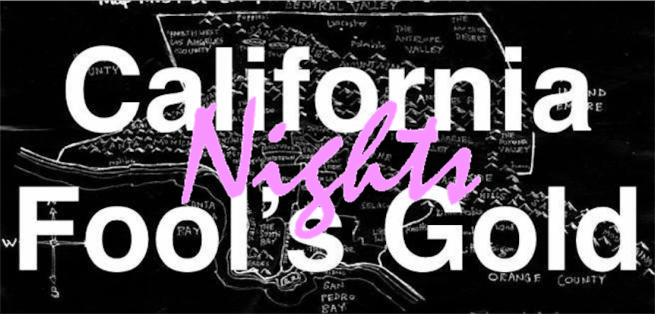
Years ago a reader asked me why I never conducted my California Fool’s Gold explorations at night. I told her that it was due, in part, to the difficulty in getting good pictures in the dark but also because many of the places which interest me (churches, historic homes, model train clubs, museums, parks, temples, &c) are generally closed at night. Of course, there are other businesses and events which are better explored at night — bars, live shows, night markets, &c. This year is the tenth anniversary of California Fool’s Gold and with that in mind, and whilst watching Baywatch’s noirish, nocturnal spin-off, Baywatch Nights, it hit me — California Fool’s Gold Nights.
The first community that I visited for California Fool’s Gold was Granada Hills, in the northernmost San Fernando Valley, in 2007. Back then, however, I didn’t have a name for the series. I came up in 2011, inspired by Huell Howser’s wonderful series, California’s Gold. Back then I also didn’t draw maps of the communities I visited, for which I’ve become somewhat known. I began drawing those around 2008 and at that time went back and quickly sketched some for the preexisting, map-less explorations. In 2007 I also had yet to create the poll with which readers vote for which communities they’d like me to explore and, nine years later, only one vote has ever been cast for Granada Hills.

In 2007 I found myself in Granada Hills because my then-girlfriend asked me to pick up a rug there that she’d bought on eBay and didn’t want to pay for the shipping of. Finding myself there, I decided to do a bit of research about the neighborhood and reasoned that I could turn that into a blog entry for my then-employer, Amoeba, and thus be paid for what was otherwise a fairly uneventful errand.
A lot has changed in the decade since. My relationship ended and I today I have no idea what became of that rug. I returned to Granada Hills a couple of years later to walk around the neighborhood’s Eichler tract with my friend, Stella. In 2012 (on this day, coincidentally) Huell Howser announced his retirement and, less than two months later, died. Around the same time, I opened a men’s shop but, finding it an impediment to exploration, closed it two years later. I entered into a new relationship and a few years ago found myself back in Granada Hills for my girlfriend’s brother’s birthday dinner at Asahi Sushi. In 2016, I visited O’Melveney Park for my series, Southland Parks (an homage to California’s Golden Parks).

After a decade, some fundamental things remain unchanged. Granada Hills is still a mostly residential suburb neighbored by Sylmar and Mission Hills to the east, North Hills and Northridge to the south, and Porter Ranch to the west. To the north — beyond the city limits — are the sparsely populated Santa Susana Mountains. Other things have changed, such as the ethnic demographics of the neighborhood. The majority are no longer non-Latino whites, and the Latino population has grown about as much as the former has fallen (although it still maintains a plurality). On the other hand, the percentage of Asians — mostly Filipino or Korean — has remained about the same, comprising around 16% of the neighborhood’s population.
There were a couple of big news stories which took place in the past ten years. There was the case of Natale Gabriele, an alumnus of the neighborhood’s Kennedy High School who was arrested for growing $24 million worth of marijuana in O’Melveney Park. Another $1.8 million of pot was found at his house on Lithuania Drive. They weren’t the budding agriculturalists’ first brushes with the law, either, as he’d previously been imprisoned in Indonesia’s notorious Kerobokan prison for drug smuggling and was freed after his mother paid for his release.
Another incident which made headlines involved a deadly shooting home on Longacre Avenue owned by Edith Kafui and Ambrose Augustt. The two homeowners allegedly rented their home out as an unlicensed “party house” and in 2016, rapper Justin Lishey (aka Kid Cali) was shot and killed there. Kenny Birdine was charged with his murder and the Augusts with negligence and wrongful death.
For the inaugural episode of California Fool’s Gold Nights, I set out for a night on the Granada Hills town with Una and Mike. Our first mission was to find food and one suggestion was Odyssey, which having opened in 1970 is the neighborhood’s second oldest restaurant. Its chief selling point seems to be its somewhat remote hilltop location and the romantic view that it affords of the 405 Freeway, located just 325 meters away. Its remoteness was also a negative, though, as was the prom-wedding vibe from photos online as we were looking for a casual experience located in the thick of things.
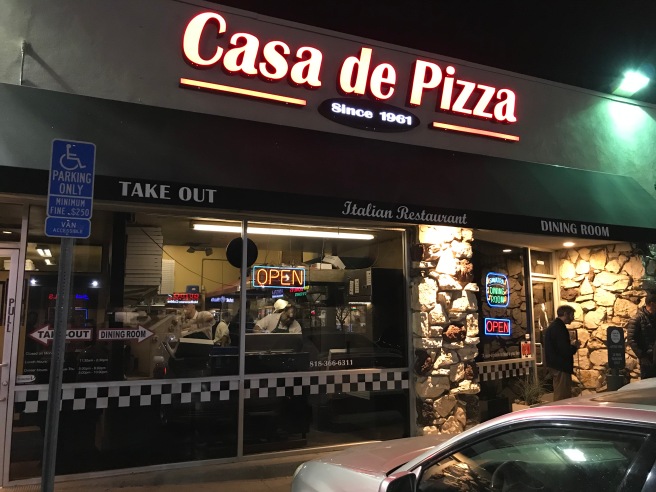
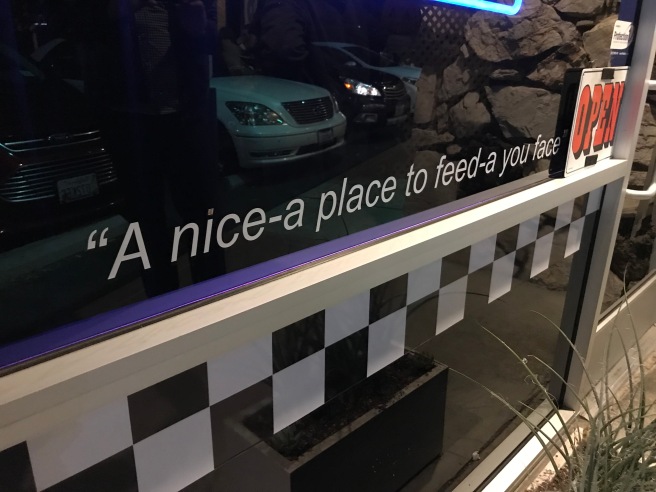
We decided on the neighborhood’s oldest restaurant, Casa de Pizza, established by Mike and Phyllis Giovanelli, in 1961. The couple were from Chicago and came to Los Angeles in 1956. Mike initially worked as a pizzaiolo at his brother-in-law’s Mission Hills joint, Paul’s Pizzeria. Casa de Pizza began as take-out joint but, as demand grew, the owners converted the storage space into a dining room and, Giovannelli having been a huge fan of Frank Sinatra, festooned it with Sinatra paraphernalia and with Sinatra’s blessing, named it the “Sinatra Room.”
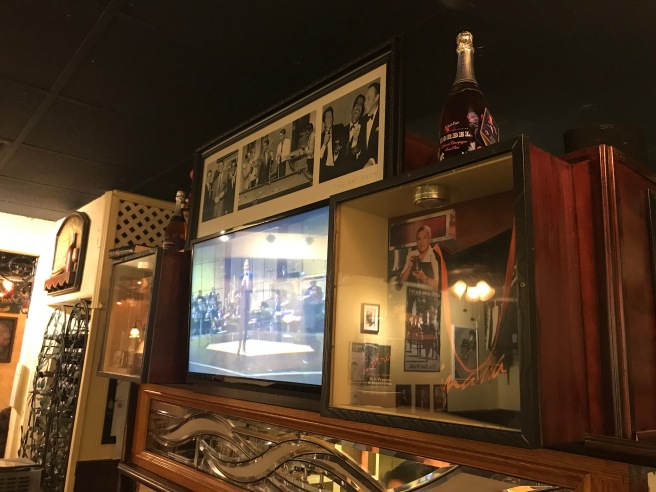
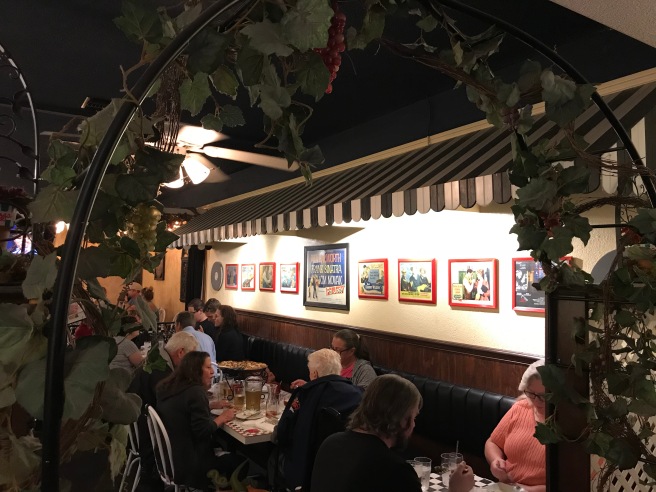
Later, the space next door was acquired and the wall between knocked down. Mike passed away in 1983 and Phyllis in 1996. Sinatra died in 1998. Today Casa de Pizza is run by Mike and Phyllis’s son, Vito.

On the window outside is a quote, “a nice-a place to feed-a you face.” No attribution is given but I found myself repeating it after our meal. After our server estimated a wait of 20 minutes, Mike and I decided to pop across the street to Granada Hills Plaza, to see what had become of a bar I’d read about which had formerly existed in the alley between a Chuck E. Cheese’s and some batting cages, Cantina de Oro. It had one entertaining Yelp review and had closed around 2012, at which time it had briefly been replaced by Joe’s Place and apparently, since 2014, had sat empty. I suggested to Mike, who has some experience as a bartender, that he open a bar there called something like “The Little League” or “The Dugout.”


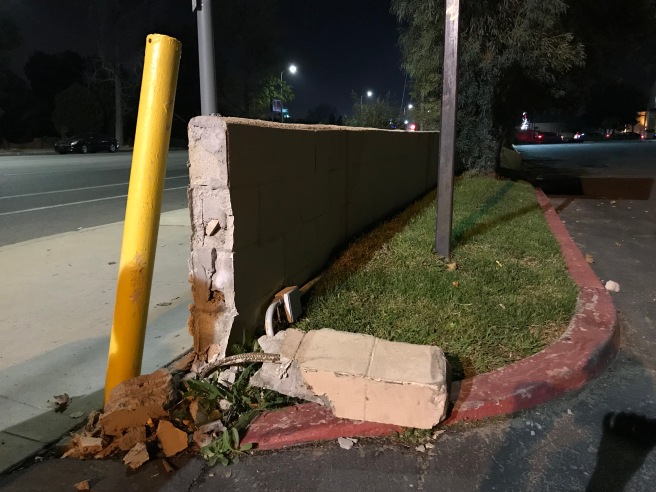
Two minutes can’t have passed before I got the call that our table was ready. We passed around the back of the plaza, through one of Granada Hills’ many parking lots, and returned to the restaurant where we shared pumpkin harvest ravioli with sage butter, a salad, a pizza bianca, and eggplant parmesan spaghetti. I was, indeed, a nice-a place to feed-a you face. It’s also, on Thursdays, apparently a nice-a place to hear-a music. From 1980 until his death in 2011, that apparently meant singer Vic Finielo. Nowawadys there’s a rotation of talent although the rest of the time, the music (and video) is all recordings of Frank Sinatra, all the time.
OTHER RESTAURANTS
When I explored Granada Hills in 2007, I included a list of local restaurants. Looking at it now, it was probably far from comprehensive. It did, however, include restaurants which are still open for business, including A & W Barbecue Seafood Restaurant, Ali Baba Persian Restaurant, Asahi Sushi, Balboa Thai Food, Burrito Factory, C.F. Food Kitchen, Good Pho You, Olympia Kebab House, Pizza Cookery, Tony’s Deli & Mexican Food, and Two Guys From Italy and Vegetable Delight.
A few of the restaurants I listed last time around have apparently closed, so spare a thought for Fountain Site Restaurant, LA Pizza Company, Nacho’s Restaurant, Palermo Deli, Pampas Cafe, Pizza Cookery, Red Devil Pizza, and Sweet Basil Thai Bistro.
I’m not going to spend the time necessary to research which of the following were merely neglected by my list in 2007 and which have opened since, but in the spirit of thoroughness, Granada Hills is also home to Amaseena Restaurant & Lounge, Ameci Pizza & Pasta, Ani Bakery, Baith Al Halal, Belgium Waffle Haus, Belly BombZ Wings Truck & Catering, Big Mama’s & Papa’s Pizzeria, Breadologie Bakery, Caesar’s Pastry, CENTERcafé, Chef Stroh’s CaliforniCajun, Chop Shop Butcher & Kitchen, El Incomparable Peruvian Cuisine, El Indio Azteca, Enjoy Bowls, Freebirds World Burrito, Fresh & Meaty Burgers On Wheels, Frosty Queen, FurnSaj Bakery, Gatten Sushi, Golden Wall Chinese Food, Guido Pizza and Pasta, Hart’s Sushi, Hot Chile Mexican Food, House of Grill, Hovik’s Famous Meat & Deli, Italia Bakery & Deli, Jeje Chicken, Joe’s Cafe, LA Wing Co, Lola’s Baja Tacos, Main Kitchen Cafe, Mercado Buenos Aires, Mighty Mouth Burgers, Ninong’s Pastries & Cafe, Noah’s Ark Cuisine, Numero Uno, Okamoto Kitchen, Oooh Lala Crepes Gourmet Food Truck, Pieology Pizzeria, Poke-Ya, Presto Pasta, R Coffee House, SUGO Italian Food Truck, Salata, Scooters Italian Ice, Siam Cuisine, Socorro’s Mexican Food, Spice Up Thai Eatery, Tacos Colima, Taqueria La Plebe and More, Tasty Tacos & More, Teriyakiya, The Pizza Cookery, The Tropic Truck, 2 For 1 Pizza Co, Vincenzo’s Pizza, White Rabbit Truck, and Zankou Chicken.
Sufficiently stuffed, and in love with the houses in Balboa Highlands, I suggested that we next walk around and admire the homes of that neighborhood. I’d never seen them at night and reasoned that some might be decorated for Christmas.
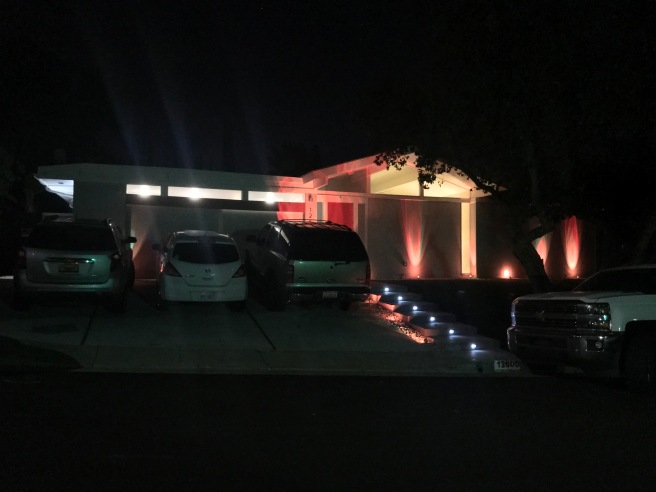
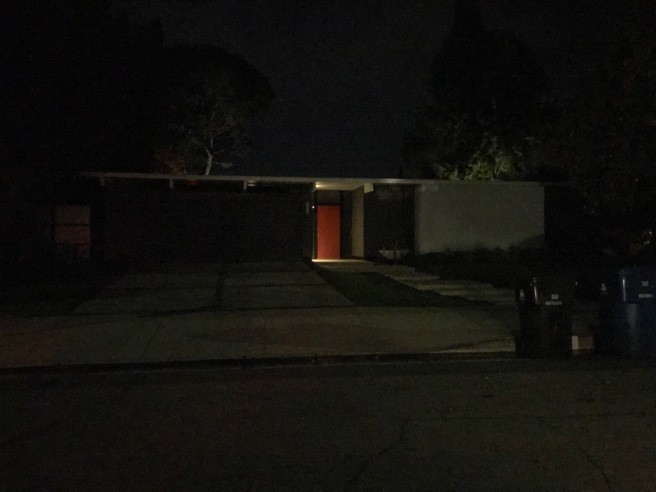
Balboa Highlands, again, is a tract of beautiful mid-century Modern homes designed by A. Quincy Jones, Claude Oakland, and Frederick Emmons for real estate developer Joseph Eichler, and built between 1962 and ’64. There’s a game that I sometimes play in which I ask “If you had to live in (region of Los Angeles) and money was no object, where would it be?” If I had to live in the San Fernando Valley, I used to think, I’d want to live in the Balboa Highlands. However, as beautiful as the homes there are, they are fairly isolated from anything of interest or even necessity. There isn’t a supermarket or library within a half hour’s walk and the nearest subway is a Subway restaurant. The nearest actual train station is 14 kilometers away, in Van Nuys. Also, although many of the homes in the tract were beautifully lit, virtually none seemed to show any Christmas spirit.

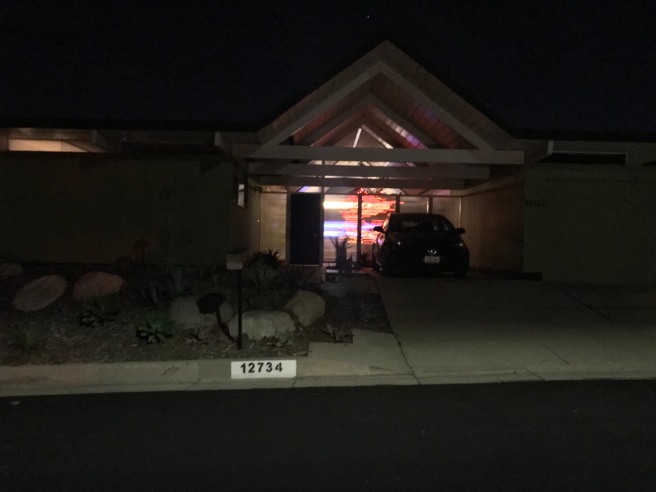
With a density of 1,380 residents per kilometer, Granada Hills has one of the lowest population densities in the county. The website Walkscore assigns it a walk score of 41 out of 100, and defines it as “car-dependent.” Its bike score, 43, is only slightly better. Its transit score is just 27. Public transit is limited to six bus lines — Metro 158, 236, and 239; and Commuter Express 419, 573, and 574. There is no “downtown” Granada Hills, either, although the intersection of Chatsworth Street and Balboa Boulevard feels remotely like one… and there are strip malls which seek to evoke a sense of place with misleading names like Granada Hills Town Center, Granada Village Shopping Center, and Granada Pavillion.
With everything so residential and car-dependent, that Granada Hills on a Sunday night was pretty sleepy came as no surprise. In 1986, the UA Granada Hills 7 multiplex opened and was the community’s first cinema — but it’s been closed since the 1990s and so was thus far also the community’s last cinema. Last time around there was a place called Breaktime Billiards & Arcade Games but it closed around 2013, leaving no pool parlors or “traditional” arcades.”
There is, however, the Cyber City LAN Center. A “LAN center,” for those who don’t know (a group which included me until just now), is a “PC Bang,” or “cyber café” — a place where mostly-young men pay a fee, sit at a computer, strap on a headset, and virtually interact. Cyber City LAN Center is open every night until 4 in the morning.
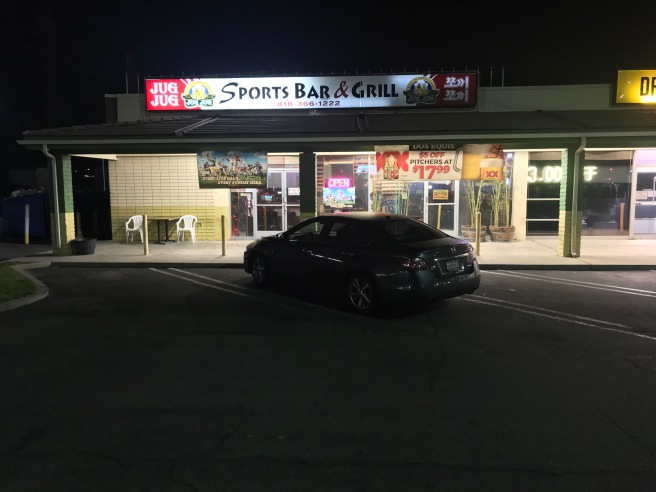
None of us were really up for a night of gaming… or walking, it turned out, as we remained, like most residents of the neighborhood, car-bound as we drove the streets of Balboa Highlands. As we headed south on Balboa Boulevard, Mike spied the sign for Jug Jug Sports Bar & Restaurant and, within the same strip mall (Knollwood Plaza), Sugar Suite. Having previously determined that despite their names neither they (nor the neighborhood’s other bars — Oh Grady’s and Tender Glow) were strip clubs, we first ventured into Jug Jug, or, as the sign also reads, “쪼끼쪼끼”
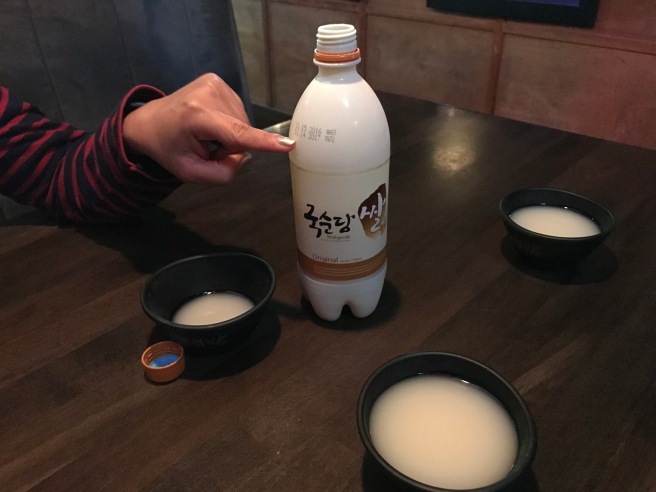
I’m not totally clear, but it seems that “쪼끼쪼끼” might mean “slobber” and/or refer, in Busan, to beer bars. Jug Jug has a pretty substantial menu but none of us were remotely hungry. Mike was considering soju but, a newly converted makgeolli fan, I asked the waitress whether or not the bar had any and she brought us a bottle of Kooksoondang and three bowls. She apologetically pointed out that the drink was a dozen days past its sell-by date but I assured her that it would be fine (and we were).

As I sipped my drink, I looked around the bar, which at a distance of two kilometers is still the closest bar to Balboa Highlands. There were three patrons, all sitting next to one another at the bar. On one of the television screens, two men grappled in an MMA match whilst on the other, tuned to National Geographic, a Gila monster slowly swallowed eggs. Entertainment included electronic darts. The musical selection was all white dude music: Beastie Boys, Offspring, Queens of the Stone Age, &c but I nevertheless enjoyed our visit.

After we finished our drinks, we headed a few doors down to Sugar Suite. Whereas “dive” is increasingly employed, like “speakeasy” to describe only a superficial aesthetic, Sugar Suite proved to be a dive in nearly every sense, from the black painted drop ceiling above to the low pile carpet below. There were mirrors along most of the walls, and most of the lighting came from the more-than-usual number of television sets. The effect was a little like being inside of one of Yayoi Kusama‘s infinity rooms — albeit minus the presence of people taking selfies. Out back there was a smoking patio and we grabbed a plush booth by the unlit, indoor fireplace. When I touched the hearth I found it to be sticky. The decorative interior metalwork suggested to me that the space had possibly been used as a bar since 1962, when the shopping center was constructed.
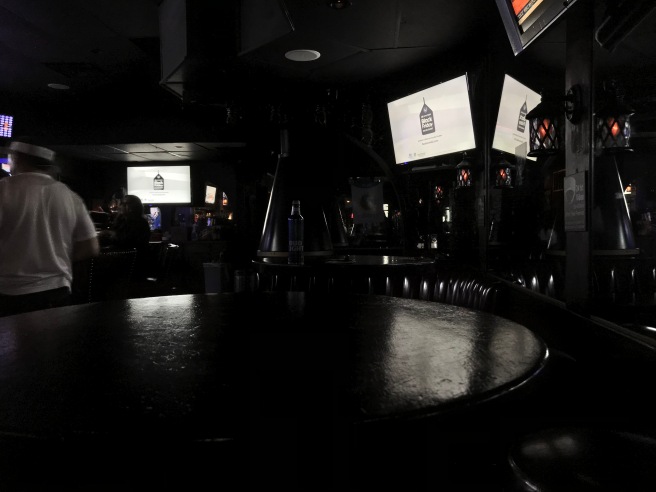
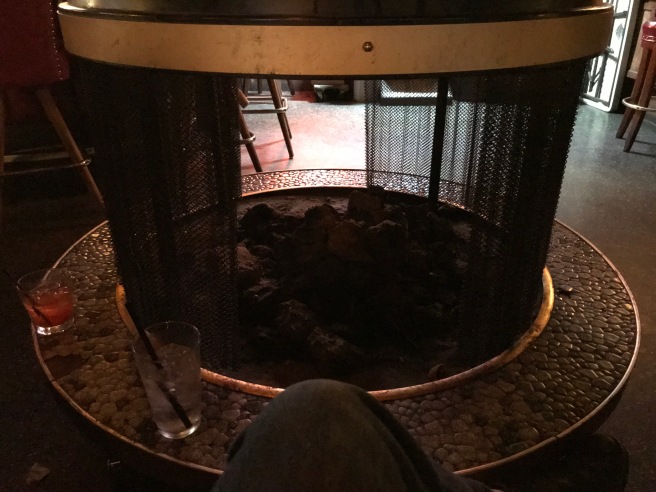
The Old Fashioneds that we were served were strong and there was a monitor broadcasting slideshow of photos taken with the bar — mostly of cheerful patrons — and none, evidently, with man-buns or pastel blue hair. Meanwhile, a couple danced to Candlebox’s “Far Behind,” underscoring how far we were from Mideast Los Angeles both psychologically and geographically. Wanting to get home at a reasonable hour, we set out once again.
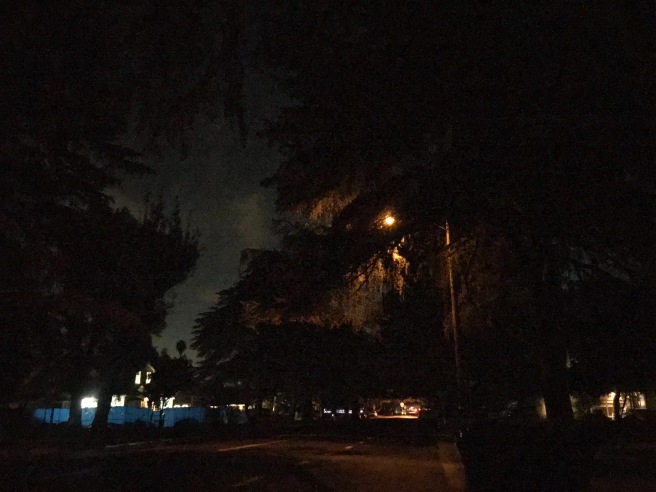
On our way out of the neighborhood, I took us down White Oak Avenue, a stretch of which is lined with 101 or so mature deodar cedars (Cedrus deodara) colloquially known as “Christmas Tree Lane.” Apparently, they were planted by John Orcutt, then superintendent of the Sunshine Ranch, in 1932, when Granada Hills was still known simply as “Granada.” In 1966, when there were 114, they were designated Los Angeles Historic-Cultural Monument No. 41. In 1982 they were featured in the film, E.T. the Extra-Terrestrial. I thought that, perhaps, so close to Christmas and, like Altadena’s Christmas Tree Lane, they might be decorated with lights and possibly ornaments. As with Balboa Highlands, this didn’t turn out to be the case… but as was also the case, even without lights they had an undeniable majesty.
FURTHER VIEWING
“Huell attends the LAPD Motorcycle Training Facility in Granada Hills” 2004
Eric Brightwell is an adventurer, writer, rambler, explorer, cartographer, and guerrilla gardener who is always seeking writing, speaking, traveling, and art opportunities — or salaried work. He is not interested in generating advertorials, clickbait, listicles, or other varieties of spam. Brightwell has written for Angels Walk LA, Amoeblog, Boom: A Journal of California, diaCRITICS, Hidden Los Angeles, and KCET Departures. His art has been featured by the American Institute of Architects, the Architecture & Design Museum, the Craft & Folk Art Museum, Form Follows Function, Los Angeles County Store, the book Sidewalking, Skid Row Housing Trust, and 1650 Gallery. Brightwell has been featured as subject in The Los Angeles Times, Huffington Post, Los Angeles Magazine, LAist, CurbedLA, Eastsider LA, Boing Boing, Los Angeles, I’m Yours, and on Notebook on Cities and Culture. He has been a guest speaker on KCRW‘s Which Way, LA? and at Emerson College. Art prints of Brightwell’s maps are available from 1650 Gallery. He is currently writing a book about Los Angeles and you can follow him on Ameba, Facebook, Goodreads, Instagram, Mubi, Twitter, and Weibo.
Click here to offer financial support and thank you!


An interesting account for those of us that don’t live in the L.A. area. I should imagine the area is also a mystery for those that do live in the area. Love the sign ‘A nice place to feed-a you face.’ Reminds me of a song back in the day, by Latin-Ozzie Joe Dolce ‘Shadappa You Face!’ Nice photography by the way.
LikeLike
Thanks!
LikeLike